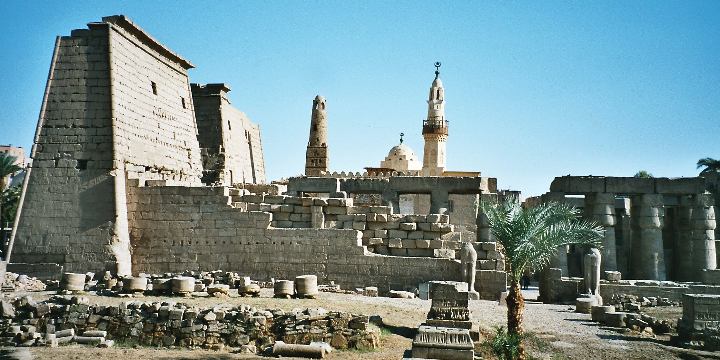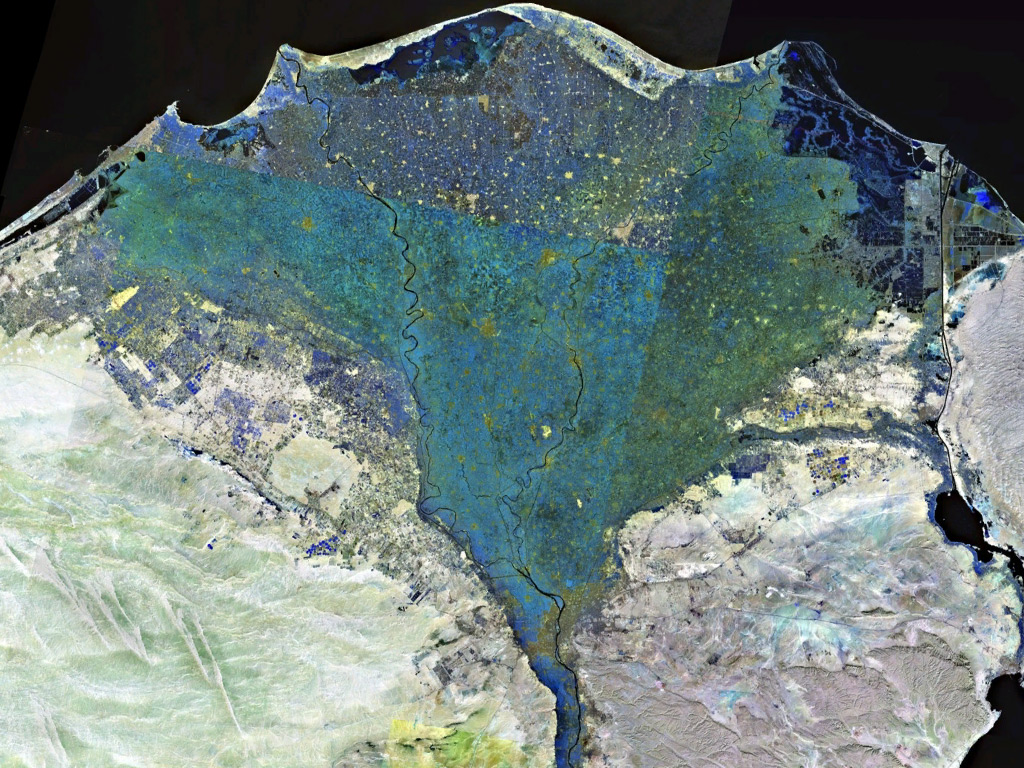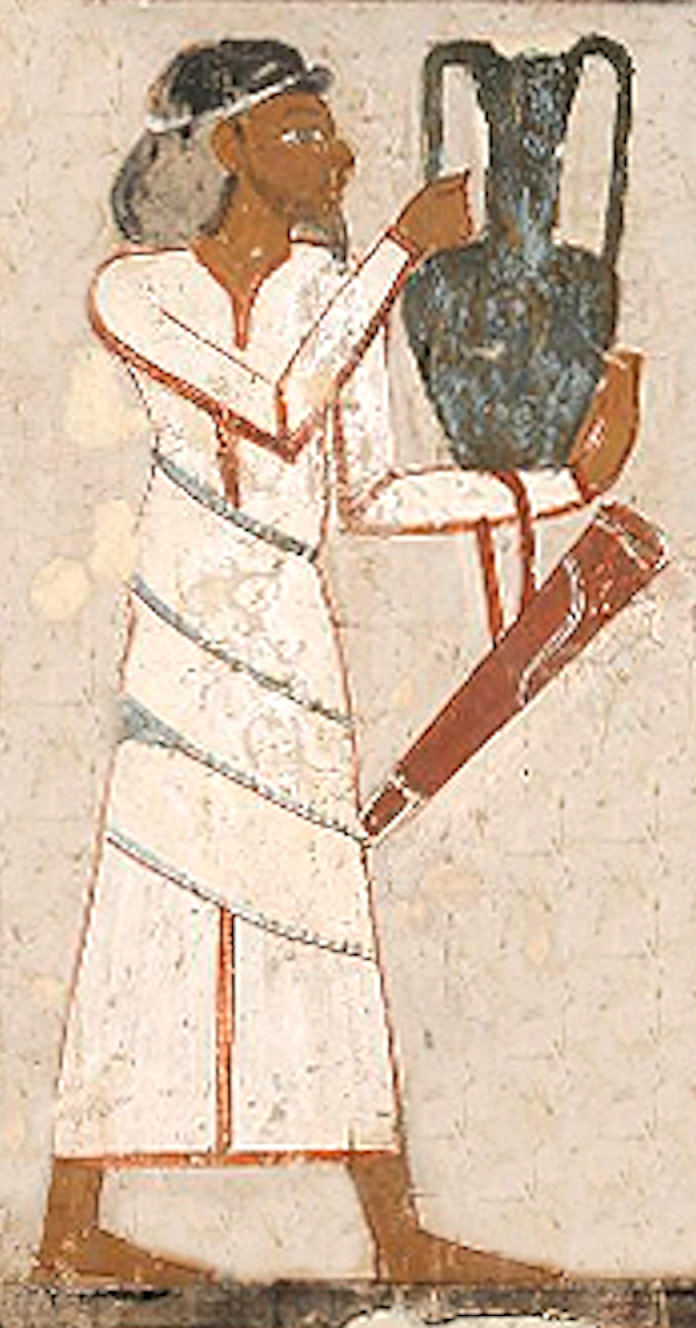|
Second Intermediate Period
The Second Intermediate Period marks a period when ancient Egypt fell into disarray for a second time, between the end of the Middle Kingdom and the start of the New Kingdom. The concept of a "Second Intermediate Period" was coined in 1942 by German Egyptologist Hanns Stock. It is best known as the period when the Hyksos people of West Asia made their appearance in Egypt and whose reign comprised the 15th Dynasty, which, according to Manetho's ''Aegyptiaca'', was founded by a king by the name of Salitis. End of the Middle Kingdom The 12th Dynasty of Egypt came to an end at the end of the 19th century BC with the death of Queen Sobekneferu (1806–1802 BC).Kim S. B. Ryholt, ''The Political Situation in Egypt during the Second Intermediate Period, c. 1800–1550 B.C.'', Museum Tusculanum Press, Carsten Niebuhr Institute Publications 20. 1997, p.185 Apparently she had no heirs, causing the 12th Dynasty to come to a sudden end, and, with it, the Golden Age of the Middle Kin ... [...More Info...] [...Related Items...] OR: [Wikipedia] [Google] [Baidu] |
Itjtawy
Itjtawy (full Egyptian name ''Amenemhat-itj-tawy'' — "Amenemhat, Seizer of the Two Lands"), is the name of the royal city founded as a new capital by Twelfth Dynasty Egyptian King Amenemhat I, who ruled from approximately 1991 BC to 1962 BC, during year 20 of his reign. As yet, the exact location of the royal city remains unidentified. Itjtawy is known to have been located in the Faiyum region and documentation exists that its cemeteries were located at Lisht, el-Lahun, and Dahshur. Relocation of the capital may have been a strategic move. The site for Itjtawy may have been chosen for its proximity to the source of Asiatic incursions into Egypt, in order to help prevent further attacks. See also * List of ancient Egyptian towns and cities * List of historical capitals of Egypt The current capital of Egypt is Cairo. Over the course of history, however, Egypt's capital has changed. List of Egyptian capitals *Thinis: (3150 BC – 2686 BC) – I and II dynasties * Memphis ... [...More Info...] [...Related Items...] OR: [Wikipedia] [Google] [Baidu] |
Middle Kingdom Of Egypt
The Middle Kingdom of Egypt (also known as The Period of Reunification) is the period in the history of ancient Egypt following a period of political division known as the First Intermediate Period. The Middle Kingdom lasted from approximately 2040 to 1782 BC, stretching from the reunification of Egypt under the reign of Mentuhotep II in the Eleventh Dynasty to the end of the Twelfth Dynasty. The kings of the Eleventh Dynasty ruled from Thebes and the kings of the Twelfth Dynasty ruled from el-Lisht. The concept of the Middle Kingdom as one of three golden ages was coined in 1845 by German Egyptologist Baron von Bunsen, and its definition evolved significantly throughout the 19th and 20th centuries. Some scholars also include the Thirteenth Dynasty of Egypt wholly into this period, in which case the Middle Kingdom would end around 1650 BC, while others only include it until Merneferre Ay around 1700 BC, last king of this dynasty to be attested in both Upper and Lower Egypt. ... [...More Info...] [...Related Items...] OR: [Wikipedia] [Google] [Baidu] |
Sakir-Har
Sakir-Har (also Seker-Har and ''Skr-Hr'') was an Hyksos king of the Fifteenth Dynasty of Egypt, ruling over some part of Lower Egypt during the Second Intermediate Period, possibly in the early 16th century BC. Attestation Sakir-Har is attested by a single inscription on a doorjamb excavated at Tell el-Dab'a—ancient Avaris—by Manfred Bietak in the 1990s. Cairo TD-8316 The doorjamb, now in Cairo under the catalog number Cairo TD-8316, bears his partial royal titulary in the manner of the Ancient Egyptian, showing his Nebti and Golden Falcon names, as well as his nomen. The doorjamb reads Theories The doorjamb confirms the identity of Sakir-Har as one of the kings of the Hyksos Fifteenth Dynasty of Egypt. His immediate successor could have been the powerful Hyksos ruler, Khyan, if he was the third Hyksos king of this dynasty, although Sakir-Har's precise position within this dynasty has not yet been established firmly. The name Sakir-Har may translate as "Reward of Har" ... [...More Info...] [...Related Items...] OR: [Wikipedia] [Google] [Baidu] |
Nile Delta
The Nile Delta ( ar, دلتا النيل, or simply , is the delta formed in Lower Egypt where the Nile River spreads out and drains into the Mediterranean Sea. It is one of the world's largest river deltas—from Alexandria in the west to Port Said in the east, it covers of Mediterranean coastline and is a rich agricultural region. From north to south the delta is approximately in length. The Delta begins slightly down-river from Cairo. Geography From north to south, the delta is approximately in length. From west to east, it covers some of coastline. The delta is sometimes divided into sections, with the Nile dividing into two main distributaries, the Damietta and the Rosetta, flowing into the Mediterranean at port cities with the same name. In the past, the delta had several distributaries, but these have been lost due to flood control, silting and changing relief. One such defunct distributary is Wadi Tumilat. The Suez Canal is east of the delta and enters the coa ... [...More Info...] [...Related Items...] OR: [Wikipedia] [Google] [Baidu] |
Khendjer
Userkare Khendjer was the twenty-first pharaoh of the Thirteenth Dynasty of Egypt during the Second Intermediate Period.Darrell D. Baker: The Encyclopedia of the Pharaohs: Volume I - Predynastic to the Twentieth Dynasty 3300–1069 BC, Stacey International, , 2008, p. 181 Khendjer possibly reigned for four to five years, archaeological attestations show that he was on the throne for at least three or four years three months and five days. Khendjer had a small pyramid built for himself in Saqqara and it is therefore likely that his capital was in Memphis. Chronological position The exact chronological position of Khendjer in the Thirteenth Dynasty is not known for certain owing to uncertainties affecting earlier kings of the dynasty. Turin King List The Turin King List mentions Khendjer in between Sekhemre Khutawy Sobekhotep and ...kare Imyremeshaw. 7:19 The Dual King Sekhemre Khutawy Sobekhotep reigned x years ... 7:20 The Dual King Userkare Khendjer, x years ... 7:21 The Du ... [...More Info...] [...Related Items...] OR: [Wikipedia] [Google] [Baidu] |
Merneferre Ay
Merneferre Ay (also spelled Aya or Eje, sometimes known as Ay I) was an ancient Egyptian pharaoh of the mid 13th Dynasty. The longest reigning pharaoh of the 13th Dynasty, he ruled a likely fragmented Egypt for over 23 years in the early to mid 17th century BC. A pyramidion bearing his name shows that he possibly completed a pyramid, probably located in the necropolis of Memphis. Merneferre Ay is the last pharaoh of the 13th Dynasty to be attested outside Upper Egypt. In spite of his long reign, the number of artefacts attributable to him is comparatively small. This may point to problems in Egypt at the time and indeed, by the end of his reign, "the administration f the Egyptian stateseems to have completely collapsed". It is possible that the capital of Egypt since the early Middle Kingdom, Itjtawy was abandoned during or shortly after Ay's reign. For this reason, some scholars consider Merneferre Ay to be the last pharaoh of the Middle Kingdom of Egypt. Chronology Chronolo ... [...More Info...] [...Related Items...] OR: [Wikipedia] [Google] [Baidu] |
Sobekneferu
, image = File:Statue of Sobekneferu (Berlin Egyptian Museum 14475).jpg , image_alt = Partially defaced bust of a female , caption = Statue of Sobekneferu , reign = 3 years, 10 months, and 24 days according to the Turin Canon in the mid 18th century BC. , predecessor = Amenemhat IV , successor = Sobekhotep I or Wegaf , prenomen = ''kꜣ-sbk-rꜥ'' Ka-sobek-re The ka of Sobek-Re , prenomen_hiero = N5-I4-D28 , nomen = ''sbk-nfrw'' Sobek-neferu / Neferu-sobek Beauty of Sobek ''sbk-šdt-nfrw'' Sobek-shedet-neferu Beauty of Sobek, lord of Shedyt , nomen_hiero = , horus = ''mryt-rꜥ'' Meryt-re Beloved of Re , horus_hiero = , nebty = ''sꜣt-sḫm-nbt-tꜣwy'' Sat-sekhem-nebet-tawy The daughter of the powerful one is, Mistress of the Two Lands , nebty_hiero = X1:G39-S42-V30:X1-N16:N16 , golden = ''ḏdt-ḫꜥw'' Djedet-khau Stable of appearances , golden_hiero = X1:R11*N28*G43:S12 , spouse = Amenemhat IV? , children = , dynasty = Twelfth Dynasty , ... [...More Info...] [...Related Items...] OR: [Wikipedia] [Google] [Baidu] |
Twelfth Dynasty Of Egypt
The Twelfth Dynasty of ancient Egypt (Dynasty XII) is considered to be the apex of the Middle Kingdom by Egyptologists. It often is combined with the Eleventh, Thirteenth, and Fourteenth dynasties under the group title, Middle Kingdom. Some scholars only consider the 11th and 12th dynasties to be part of the Middle Kingdom. History The chronology of the Twelfth Dynasty is the most stable of any period before the New Kingdom. The Turin Royal Canon gives 213 years (1991–1778 BC). Manetho stated that it was based in Thebes, but from contemporary records it is clear that the first king of this dynasty, Amenemhat I, moved its capital to a new city named "Amenemhat-itj-tawy" ("Amenemhat the Seizer of the Two Lands"), more simply called, Itjtawy. The location of Itjtawy has not been discovered yet, but is thought to be near the Fayyum, probably near the royal graveyards at el-Lisht. The order of its rulers of the Twelfth Dynasty is well known from several sources: two lists re ... [...More Info...] [...Related Items...] OR: [Wikipedia] [Google] [Baidu] |
Salitis
In the Manethonian tradition, Salitis (Greek ''Σάλιτις'', also Salatis or Saites) was the first Hyksos king, the one who subdued and ruled Lower Egypt and founded the 15th Dynasty. Biography Salitis is mainly known from a few passages of Flavius Josephus' work ''Contra Apionem''; for these passages, Josephus claimed to have reported Manetho's original words. It seems that during the reign of an Egyptian pharaoh called ''Timaios'' or ''Tutimaios'', an army of foreigners suddenly came from the Near East and took over the Nile Delta without a fight. After conquering Memphis and likely deposing Timaios, the invaders committed several atrocities such as destroying cities and temples and killing or capturing the native Egyptians. After that, they Salitis was determined to hold down his new conquests. For this reason he fortified the eastern borders, and sought a strategic position to establish an imposing stronghold from which he could dominate the independent-minded Upper Egy ... [...More Info...] [...Related Items...] OR: [Wikipedia] [Google] [Baidu] |
Manetho
Manetho (; grc-koi, Μανέθων ''Manéthōn'', ''gen''.: Μανέθωνος) is believed to have been an Egyptian priest from Sebennytos ( cop, Ϫⲉⲙⲛⲟⲩϯ, translit=Čemnouti) who lived in the Ptolemaic Kingdom in the early third century BC, during the Hellenistic period. He authored the ''Aegyptiaca'' (''History of Egypt'') in Greek, a major chronological source for the reigns of the kings of ancient Egypt. It is unclear if he wrote his history and king list during the reign of Ptolemy I Soter or Ptolemy II Philadelphos, but it was completed no later than that of Ptolemy III Euergetes. Name The original Egyptian version of Manetho's name is lost, but some speculate it means "Truth of Thoth", "Gift of Thoth", "Beloved of Thoth", "Beloved of Neith", or "Lover of Neith". Less accepted proposals are ''Myinyu-heter'' ("Horseherd" or "Groom") and ''Ma'ani-Djehuti'' ("I have seen Thoth"). In the Greek language, the earliest fragments (the inscription of uncertain date ... [...More Info...] [...Related Items...] OR: [Wikipedia] [Google] [Baidu] |
West Asia
Western Asia, West Asia, or Southwest Asia, is the westernmost subregion of the larger geographical region of Asia, as defined by some academics, UN bodies and other institutions. It is almost entirely a part of the Middle East, and includes Anatolia, the Arabian Peninsula, Iran, Mesopotamia, the Armenian Highlands, the Levant, the island of Cyprus, the Sinai Peninsula, and partly the Caucasus Region (Transcaucasia). The region is considered to be separated from Africa by the Isthmus of Suez in Egypt, and separated from Europe by the waterways of the Turkish Straits and the watershed of the Greater Caucasus. Central Asia lies to its northeast, while South Asia lies to its east. Twelve seas surround the region (clockwise): the Aegean Sea, the Sea of Marmara, the Black Sea, the Caspian Sea, the Persian Gulf, the Gulf of Oman, the Arabian Sea, the Gulf of Aden, the Red Sea, the Gulf of Aqaba, the Gulf of Suez, and the Mediterranean Sea. Western Asia covers an area of , with a pop ... [...More Info...] [...Related Items...] OR: [Wikipedia] [Google] [Baidu] |
Hyksos
Hyksos (; Egyptian '' ḥqꜣ(w)- ḫꜣswt'', Egyptological pronunciation: ''hekau khasut'', "ruler(s) of foreign lands") is a term which, in modern Egyptology, designates the kings of the Fifteenth Dynasty of Egypt (fl. c. 1650–1550 BC). The seat of power of these kings was the city of Avaris in the Nile delta, from where they ruled over Lower and Middle Egypt up to Cusae. In the ''Aegyptiaca'', a history of Egypt written by the Greco-Egyptian priest and historian Manetho in the 3rd century BC, the term Hyksos is used ethnically to designate people of probable West Semitic, Levantine origin. While Manetho portrayed the Hyksos as invaders and oppressors, this interpretation is questioned in modern Egyptology. Instead, Hyksos rule might have been preceded by groups of Canaanite peoples who gradually settled in the Nile delta from the end of the Twelfth Dynasty onwards and who may have seceded from the crumbling and unstable Egyptian control at some point during the Thirteent ... [...More Info...] [...Related Items...] OR: [Wikipedia] [Google] [Baidu] |








